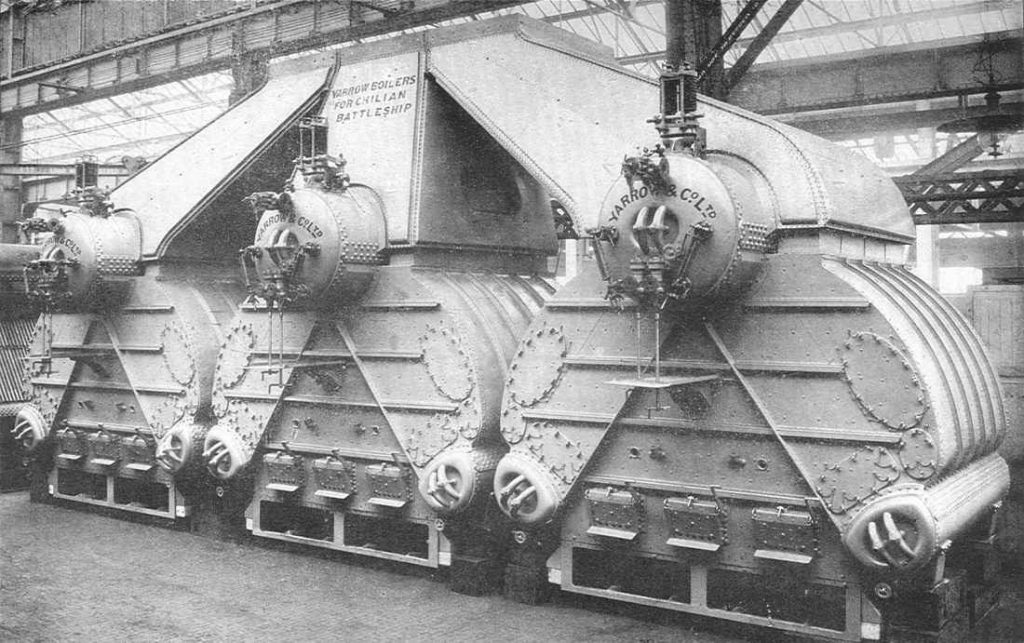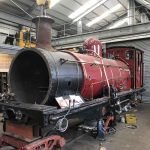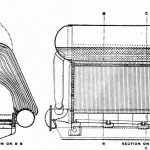The Thornycroft boiler (‘Speedy’ type)Fig. 58, consists essentially of a central upper steam cylinder A, and two smaller lower water cylinders B, these latter being fitted about the level of the fire-bars.
Figure 58 A series of steam generating tubes of small diameter are fitted between the upper cylinder and each of the lower water cylinders. They are secured at each end by being simply rolled into the cylinder plating by means of the roller expander, the parts of the cylinders into which they are rolled being made thick enough for this purpose. These tubes form practically the whole of the heating surface of the boiler, and the inner row on each side is curved in such a manner that they are close together at the top and form the roof of the furnace or combustion chamber.

Thornycroft (Daring) type.
The length of the ‘Speedy’s’ boilers to allow for return tubes is considerable, the tubes are not very accesslble, and the height of the furnace is not great, so that when the demand for torpedo-boat destroyers came, in order to meet their special requirements as regards lightness, also to give an improved furnace and greater means of access to the tubes, a modified type of boiler was designed, known as the Thornycroft (Daring) type (Figs. 59 and 60). This type obtains two furnaces’ in each boiler and a greater amount of fire-grate in the available space.
It consists of an upper cylinder A similar to that of the preceding type, into which the upper ends of the generating tubes are rolled.
Vertically below this is the principal lower cylinder B, to which the lower ends of the majority of the tubes are attached.
Two smaller water cylinders, D, are arranged on each side of the principal lower cylinder, and the furnaces are situated between them.
Three rows of generating tubes connect the upper cylinder to each of the small water cylinders D and form the outside boundaries of the furnaces, the inner boundaries being made by the tubes connecting the upper cylinder A with the principal lower one.


Of the three rows connected to the small water cylinder, the outside two touch each other, and so form a water wall which confines the flames and gases. The main body of the tubes are so curved as to leave a considerable space, C, between the two groups on each side; the gases are discharged into this space, which forms the uptake of the boiler.
The inner and outer rows of tubes of each centre group are formed as walls of tubes, except at the lower part of the furnace side and upper part of the uptake side, where spaces are left for the entry and exit of gases.
The gases, after leaving the fire, enter through the spaces E, at the bottom of the outer row, pass up between the walls among the tubes, and emerge through the spaces F at the top of the inner rows to the uptake space C, between the two centre groups of tubes. They proceed along this space to the end of the boiler and thence to the funnel.



Comments are closed